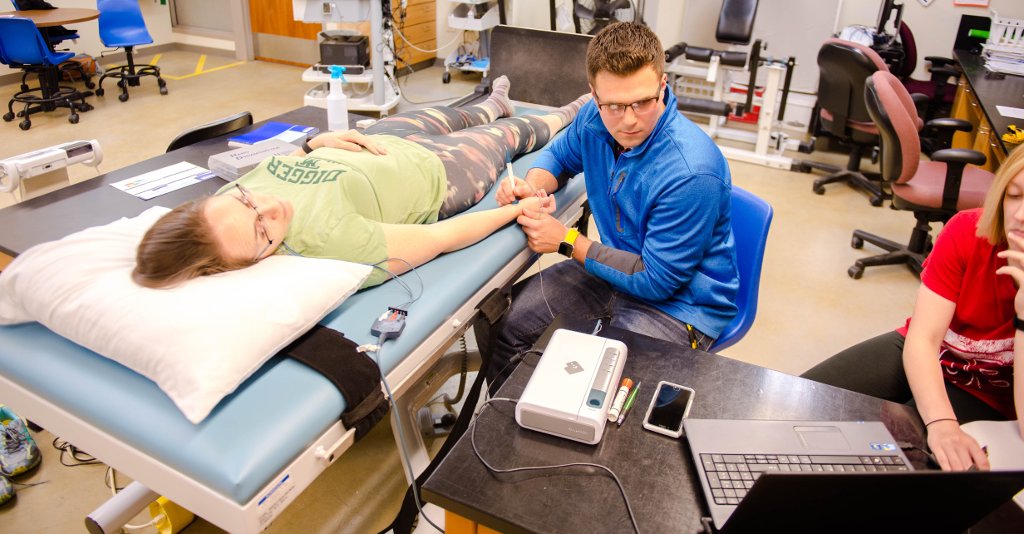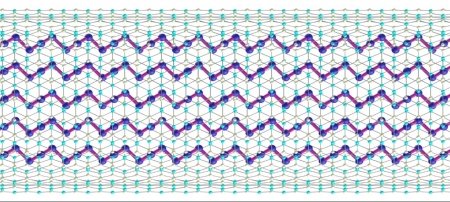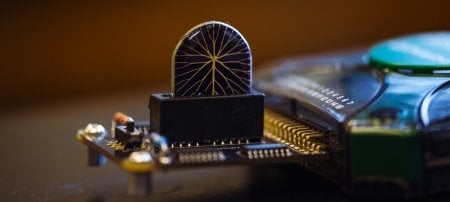An innovative idea to replace wearable health monitoring devices with embroidered electronics garners attention from the National Science Foundation.
Health monitoring devices—FitBit or Garmin accelerometer watches, apps on cell phones, heart monitors—are becoming ubiquitous, but they have their drawbacks. In some climates, these devices can rub irritatingly against skin. Some are heavy and bulky. So imagine if embroidery on clothing could replace these devices altogether.
Ye Sun, an assistant professor in Mechanical Engineering-Engineering Mechanics, has received an NSF CAREER Award, which recognizes outstanding achievement by early career faculty. The research and development grant is for Sun’s project "System-on-Cloth: A Cloud Manufacturing Framework for Embroidered Wearable Electronics."
Sun’s project is funded for $500,000 for five years.
Flexible electronics to improve well-being monitoring
Well-being management includes daily monitoring of health signals, including heart rate, brain waves and muscle signals, and the list of monitorable signals is growing.
By using conductive thread and passive electronics—tiny semiconductors, resistors and capacitors—Sun’s lab is able to design flexible embroidery to turn logos into wearable electronics.

“For now, when we have wearable devices there are different problems—they can cause skin irritation and some people can’t wear these devices 24 hours a day, but sometimes such long-term monitoring is necessary,” Sun says. "In the future, all electronics can be flexible and won’t affect people’s lives.”
Sun’s lab can embroider on just about anything flexible, whether cloth, foam or other materials. The lab provides coding for the electronics and stitch generation to embroiderers. The stitches themselves become the electronic circuit.
Building manufacturing networks and combining art and engineering
But the funding isn’t just for improving embroidered electronics, it’s also to build a manufacturing network and cloud-based website where stitch generation orders can be made.
“In the future, a person can upload the embroidery design to generate the stitches or download certain stitches,” she says.
Sun is working with professional embroidering companies to create prototypes by downloading stitch schematics from a cloud-based website. She says any embroidery company has the potential to manufacture embroidered health monitors.
She also hopes flexible, wearable electronics will interest a new generation of engineers by appealing to their artistic sides—this type of embroidery circuit weaves together craft and functional design.
“I believe the embroidered wearable electronics can be a new direction for wearable electronics,” Sun says. “To make this successful, we need the technical electronics and the manufacturing to translate the design to make it happen.”
Michigan Technological University is an R1 public research university founded in 1885 in Houghton, and is home to nearly 7,500 students from more than 60 countries around the world. Consistently ranked among the best universities in the country for return on investment, Michigan's flagship technological university offers more than 120 undergraduate and graduate degree programs in science and technology, engineering, computing, forestry, business, health professions, humanities, mathematics, social sciences, and the arts. The rural campus is situated just miles from Lake Superior in Michigan's Upper Peninsula, offering year-round opportunities for outdoor adventure.






Comments